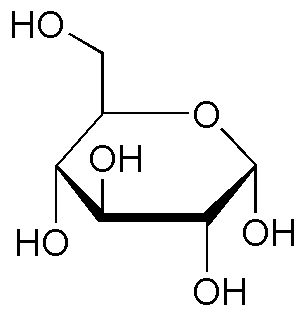D-(+)-Glucose is widely utilized in research focused on:
- Food and Beverage Industry: It serves as a natural sweetener in various products, enhancing flavor without the need for artificial additives.
- Pharmaceuticals: Used as an excipient in drug formulations, it helps improve the solubility and bioavailability of active ingredients.
- Biotechnology: Acts as a primary energy source for microbial fermentation processes, crucial in producing biofuels and bioplastics.
- Clinical Nutrition: Commonly found in intravenous solutions to provide essential energy to patients unable to consume food orally.
- Research and Development: Utilized in various biochemical assays and studies, serving as a substrate for enzyme activity and metabolic pathways.
General Information
Properties
Safety and Regulations
Applications
D-(+)-Glucose is widely utilized in research focused on:
- Food and Beverage Industry: It serves as a natural sweetener in various products, enhancing flavor without the need for artificial additives.
- Pharmaceuticals: Used as an excipient in drug formulations, it helps improve the solubility and bioavailability of active ingredients.
- Biotechnology: Acts as a primary energy source for microbial fermentation processes, crucial in producing biofuels and bioplastics.
- Clinical Nutrition: Commonly found in intravenous solutions to provide essential energy to patients unable to consume food orally.
- Research and Development: Utilized in various biochemical assays and studies, serving as a substrate for enzyme activity and metabolic pathways.
Documents
Safety Data Sheets (SDS)
The SDS provides comprehensive safety information on handling, storage, and disposal of the product.
Product Specification (PS)
The PS provides a comprehensive breakdown of the product’s properties, including chemical composition, physical state, purity, and storage requirements. It also details acceptable quality ranges and the product's intended applications.
Certificates of Analysis (COA)
Search for Certificates of Analysis (COA) by entering the products Lot Number. Lot and Batch Numbers can be found on a product’s label following the words ‘Lot’ or ‘Batch’.
*Catalog Number
*Lot Number
Certificates Of Origin (COO)
This COO confirms the country where the product was manufactured, and also details the materials and components used in it and whether it is derived from natural, synthetic, or other specific sources. This certificate may be required for customs, trade, and regulatory compliance.
*Catalog Number
*Lot Number
Safety Data Sheets (SDS)
The SDS provides comprehensive safety information on handling, storage, and disposal of the product.
DownloadProduct Specification (PS)
The PS provides a comprehensive breakdown of the product’s properties, including chemical composition, physical state, purity, and storage requirements. It also details acceptable quality ranges and the product's intended applications.
DownloadCertificates of Analysis (COA)
Search for Certificates of Analysis (COA) by entering the products Lot Number. Lot and Batch Numbers can be found on a product’s label following the words ‘Lot’ or ‘Batch’.
*Catalog Number
*Lot Number
Certificates Of Origin (COO)
This COO confirms the country where the product was manufactured, and also details the materials and components used in it and whether it is derived from natural, synthetic, or other specific sources. This certificate may be required for customs, trade, and regulatory compliance.


